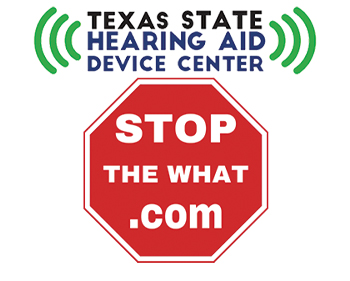By Jenny Goode LBSW, MS, CEO for Betty Hardwick Center
Three years ago, I had the opportunity to meet a young man named Kevin Hines, who shared the story of his suicide attempt – a jump from the Golden Gate Bridge in 2000. Since the bridge’s construction in 1937, more than 1600 people have jumped to their death. Kevin is one of very few survivors of
such an attempt. His story is compelling and complicated, and I continue to carry its significance with me in my work at the Center. Perhaps the most haunting takeaway is that, in the instant he jumped, he wished he could take it back.
Miraculously, he survived, and in sharing his story, he shares a great gift and responsibility with everyone who hears it. It leaves us wondering… was there a thread of hope, an unanswered silent prayer for a sign, a kind but simple gesture from anyone, even a stranger, that could have changed the course? In Kevin’s story, he shares the events of that day – talking with his Dad that morning, traveling on public transportation, seeing tourists on the bridge… but there were days and months before that day. And he describes his family and friends – like many others who have found themselves walking this suicide path – as loving, caring and trying to help him. Despite any efforts to intervene and assist, some people will still die by suicide.
In June 2018, you may have seen news coverage of the Centers for Disease Control (CDC) report indicating that across the nation, suicide rates are on the rise. In Texas, between 1999 and 2016, the increase was almost 19%. This is occurring in our community as well. In Taylor County in 2016, there were 20.5 suicide deaths per 100K in population, compared to the national age-adjusted rate of 13.5. Research indicates that demographics, access to care, access to firearms, and cultural differences are among several factors that influence numbers of suicides.
The CDC report includes three key findings:
1. Nationally, nearly 45,000 lives were lost to suicide in 2016;
2. Half of the States have seen suicide rates increase by more than 30% since 1999; and,
3. 54% of people who died by suicide did not have a known mental health condition.
The report expresses that suicide is not just a mental health issue, but a broader public health issue, made more urgent by the fact that most suicide deaths cannot be attributed to a diagnosed mental illness. A host of variables can contribute to suicidal ideation including financial crises, substance abuse, pending criminal legal issues, relationship problems, unstable housing, physical health problems, and other common crises people face every day. To be effective in prevention and education efforts, we can all be better educated about risk factors, warning signs, and how to intervene.
So, what can you do?
Data reflects that suicide prevention efforts are effective. The National Council for Behavioral Healthcare reports, “For every person who dies by suicide, there are 278 individuals annually
who think seriously about suicide but do not die.” Many of those people are connected to treatment – by teachers, coaches, doctors, nurses, parents, friends, neighbors – who saw something that concerned them, courageously voiced their concerns, kept the person safe, sought help, and followed up with support and encouragement.
You do not need to be a mental health professional to prevent suicide. It’s not realistic, helpful or proactive to think that this is a job better left to the mental health professionals – public health problems require broad public solutions. It’s our goal to equip all members of the community with some basic information about how to identify a person at risk and to assist them.
Following the tragic deaths at Sandy Hook Elementary School, the Texas Legislature and Health and Human Services Commission set out to bolster prevention efforts across the state, recognizing that society itself is the best resource for improving community response to behavioral health crises. We’re pleased to offer Mental Health First Aid classes to interested parties. The goal of MHFA is to take the fear out of having conversations about mental health conditions like anxiety, depression, suicidality, and also eating disorders and substance abuse. Today, if someone in your office appeared to be having a heart attack, most of us would know to start CPR and call 911. MHFA strives to equip people to aptly and quickly respond when someone shows symptoms of mental health distress or substance abuse and connect them with help.
Betty Hardwick Center is equipped to provide MHFA education to public school staff and university staff at no cost. In recent years, we have trained hundreds of local school employees to recognize and identify students with mental health needs and connect them to treatment. Additionally, we offer MHFA once a month at no cost to interested community members. As a result, we’ve trained many community members including law enforcement, probation officers, CASA volunteers, church members and staff, other nonprofit staff, and others interested in the curriculum.
As the local mental health authority, Betty Hardwick Center continues to provide many direct services to individuals in our community through our mental health, intellectual and developmental disability, and early childhood intervention programs. We also look for ways to serve the broader community. Suicide prevention and education is one of those efforts. Locally, Betty Hardwick Center operates a crisis hotline accessible at 1-800-758-3344. You can also call the National Suicide Prevention Lifeline at 1-800-273-TALK (8255) to be connected to local resources regardless of where the individual is located. For more information or to contact us, please visit our website www.bettyhardwick.org.
SUICIDE PREVENTION – YOU MAKE THE DIFFERENCE
By Jenny Goode LBSW, MS, CEO for Betty Hardwick Center
2616 S. Clack | Abilene, TX 79606 | (325)690-5100
1-800-758-3344 24-Hour Crisis Line | www.bettyhardwick.org
Diet




























Leave a Reply